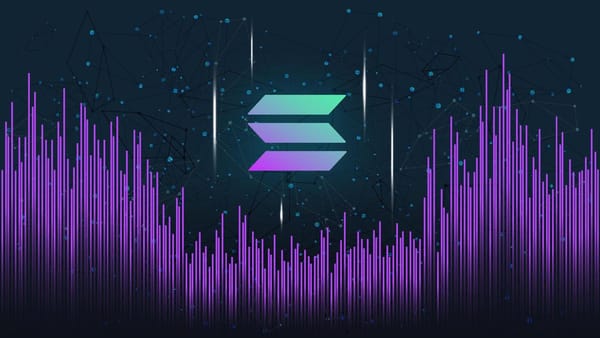Fed's 'Skinny Master Account' Could Bridge Ripple's RLUSD and XRP to US Payment System
Federal Reserve's 'skinny master account' proposal and Ripple's pending OCC charter application create dual pathways to US payment rails. With October decision deadlines converging, RLUSD could soon settle directly through Fed infrastructure.

Federal Reserve Governor Chris Waller's new proposal for limited-access master accounts signals a watershed moment for blockchain payment companies like Ripple, potentially opening direct access to US payment rails without traditional banking intermediaries—perfectly timed with Ripple's pending national bank charter application.
On October 21, 2025, at the Federal Reserve's inaugural Payments Innovation Conference in Washington, D.C., Governor Christopher Waller announced a groundbreaking proposal that could fundamentally reshape how cryptocurrency and fintech companies interact with the American banking system. The "skinny master account" concept—a limited-access version of the Fed's coveted master accounts—would allow legally eligible institutions direct access to US payment infrastructure while maintaining appropriate risk controls.
A New Era for Digital Assets at the Fed
"This is a new era for the Federal Reserve in payments—the defi industry is not viewed with suspicion or scorn," Waller declared in his opening remarks. "Rather, today, you are welcomed to the conversation on the future of payments in the United States."
The proposed payment account would provide access to Federal Reserve payment rails while implementing safeguards, including no interest on balances, potential balance caps, no daylight overdraft privileges, and no discount window access. According to CoinDesk, Waller emphasized that these streamlined accounts would have faster review timelines than traditional master accounts, acknowledging that "payments innovation moves fast, and the Federal Reserve needs to keep up."
Why This Matters for Ripple and RLUSD
The timing couldn't be more significant for Ripple, which applied for a Fed master account earlier this year. The company has spent more than a decade building blockchain settlement infrastructure designed to bridge traditional finance with digital assets, most recently through its RLUSD stablecoin and enterprise liquidity network.
According to BeInCrypto, if adopted, the Fed's limited-access master account framework could provide the regulatory bridge Ripple has sought since its legal battles with the SEC. The proposal would allow legally recognized entities like Ripple to plug RLUSD and XRP liquidity directly into US payment networks, eliminating reliance on intermediary banks and enabling real-time settlement capabilities.
RLUSD Approaches $1 Billion Market Milestone
Ripple's stablecoin momentum adds weight to the potential impact of Waller's proposal. According to CoinMarketCap data, RLUSD has reached approximately $874 million in market capitalization as of October 22, 2025, placing it among the top 100 cryptocurrencies by market cap. The stablecoin, which launched in late 2024, is backed by US dollar reserves and other cash equivalents and is issued by Standard Custody & Trust Company, a wholly owned Ripple subsidiary.
The rapid growth of RLUSD reflects increasing institutional interest in compliant stablecoin infrastructure. Coin Central reports that RLUSD's 24-hour trading volume recently surged by 75%, helping the stablecoin re-enter the top 100 cryptocurrencies. The token has been listed on major exchanges including Bullish, Bitget, and Bybit, providing liquidity through multiple trading pairs including RLUSD/USDT, RLUSD/ETH, and RLUSD/XRP.
Strategic Timing: Ripple's $1 Billion GTreasury Acquisition
The Fed's announcement arrives just days after Ripple's massive strategic move into corporate treasury management. On October 16, 2025, Ripple announced a $1 billion acquisition of GTreasury, a global treasury management platform serving over 1,000 enterprise clients across 160 countries.
"For too long, money has been stuck in slow, outdated payments systems and infrastructure, causing unnecessary delays, high costs, and roadblocks to entering new markets—problems that blockchain technologies are ideally suited to solve," said Ripple CEO Brad Garlinghouse in the acquisition announcement. "Ripple's and GTreasury's capabilities together bring the best of both worlds, so treasury and finance teams can finally put their trapped capital to work, process payments instantly, and open up new growth opportunities."
The GTreasury deal marks Ripple's third major acquisition in 2025, following the purchases of prime broker Hidden Road ($1.25 billion) and stablecoin platform Rail ($200 million), underscoring the company's aggressive expansion strategy and strong balance sheet.
How Direct Fed Access Changes the Game
Currently, only chartered banks can use Federal Reserve payment rails directly. The Fed's backbone infrastructure moves money between financial institutions instantly, powering services like wire transfers, ACH payments, and clearing settlements. Blockchain companies and fintechs must operate through partner banks, creating dependencies, delays, and additional costs.
The skinny master account proposal would fundamentally change this dynamic. As reported by BeInCrypto, legally eligible fintechs and stablecoin issuers would gain critical payment capabilities—the same rails commercial banks use for domestic transfers—without needing full banking privileges like Fed borrowing or earning interest on reserves.
For Ripple specifically, this could mean:
- Direct Settlement: RLUSD transactions could settle directly on Fed payment rails without banking intermediaries
- Real-Time Liquidity: XRP's On-Demand Liquidity (ODL) solution could integrate with Fed infrastructure for instant cross-border settlements
- Reduced Costs: Eliminating intermediary banks would decrease transaction costs and operational friction
- Enhanced Compliance: Operating within Fed-regulated infrastructure validates Ripple's compliant approach to blockchain payments
- Institutional Validation: Fed access would strengthen Ripple's case for treating RLUSD as a legitimate payment instrument in traditional finance
Ripple's Dual-Track Regulatory Strategy: Charter Bank License Application
While the skinny master account offers one pathway to payment rail access, Ripple has simultaneously pursued a more comprehensive approach—revealing a sophisticated dual-track strategy that positions the company to benefit regardless of which regulatory door opens first.
The Full Charter Application: Ripple National Trust Bank
On July 2, 2025, Ripple formally applied to the Office of the Comptroller of the Currency (OCC) for a national trust bank charter through a proposed entity called "Ripple National Trust Bank." This application, which became publicly available in August 2025, reveals Ripple's ambitions extend far beyond simple payment access.
"True to our long-standing compliance roots, Ripple is applying for a national bank charter from the OCC," CEO Brad Garlinghouse announced on X. "If approved, we would have both state (via NYDFS) and federal oversight, a new (and unique!) benchmark for trust in the stablecoin market."
Critically, the charter application also included a simultaneous application for a Fed master account filed through Ripple's subsidiary Standard Custody & Trust Company on June 30, 2025—nearly four months before Governor Waller's skinny master account announcement.
What the Charter Would Provide
According to the public OCC filing, Ripple National Trust Bank would be:
- A Limited-Purpose National Trust Bank: Not accepting deposits or making loans like traditional banks
- Headquartered in New York: Operating as a wholly owned subsidiary of Ripple Labs
- Focused on B2B Services: Providing custody, stablecoin reserve management, tokenization infrastructure, and fiduciary services
- Led by Experienced Banking Executives: Including John McDonald (President of Standard Custody), Stuart Alderoty (Chief Legal Officer), Timothy Keaney (former Vice Chairman of BNY Mellon), and David Puth (former CEO of CLS Group)
- Strategically Separate from XRP: The application notably does not mention XRP, likely to avoid regulatory entanglement from past SEC litigation
Comparing the Two Pathways: Charter vs. Skinny Master Account
The strategic logic becomes clear when examining what each pathway offers:
Full Charter Bank License Advantages
- Complete federal banking oversight and institutional legitimacy
- Full master account access with all privileges
- Ability to hold RLUSD reserves directly with the Fed
- Expanded services: custody, fiduciary activities, tokenization infrastructure
- Enhanced credibility ("operating as a federally chartered bank")
- Access to discount window and full suite of Fed services
- Competitive moat—banking licenses create significant barriers to entry for competitors
Full Charter Challenges
- Lengthy approval process (120-day statutory minimum, often extends much longer)
- Intensive regulatory scrutiny and compliance requirements
- Significant operational costs of maintaining banking charter
- More restrictive ongoing regulatory oversight
- Uncertain approval—OCC could deny application
Skinny Master Account Advantages
- Faster approval timeline ("streamlined review" per Waller's speech)
- Lower regulatory burden than full charter
- Direct Fed payment rail access (the critical capability for payments)
- Lower operational costs (no interest paid, balance caps, simpler structure)
- More operational flexibility—no full banking supervision
- Available to "all legally eligible institutions"
- Reduced dependency on traditional banking relationships
Skinny Master Account Limitations
- No interest earned on balances held at Fed
- No daylight overdraft privileges—payments rejected if balance hits zero
- No discount window borrowing access
- Potential balance caps imposed by Fed
- Limited to payment services only—no custody, trust, or expanded banking activities
- Still just a "prototype" proposal—not yet formally implemented
The Hedged-Bet Strategy: Why Pursue Both Simultaneously
Industry analysts characterize Ripple's approach as a comprehensive hedging strategy. By pursuing both pathways simultaneously, Ripple ensures access to Fed payment rails through whichever regulatory door opens first:
Scenario 1: Charter Approved First
Ripple gains full banking capabilities, including automatic master account access. The company can then decide whether to maintain the full charter or potentially transition certain operations to the skinnier option if operational costs prove burdensome.
Scenario 2: Skinny Master Account Implemented First
Ripple gains immediate payment rail access while continuing to pursue the full charter for expanded capabilities. This provides a "foot in the door" with the Fed while demonstrating operational competence that may strengthen the charter application.
Scenario 3: Both Approved
Ripple gains maximum flexibility, potentially using the skinny account for high-volume, low-margin payment operations while reserving the full charter for premium custody, trust services, and activities requiring deeper banking capabilities.
Scenario 4: Neither Approved Immediately
Ripple continues operating through Standard Custody's New York state trust charter while building the case for federal access—the status quo, but with stronger positioning for eventual approval.
Critical Timing Convergence: October 2025 Deadline
Under OCC rules, regulators must decide on Ripple's charter application within 120 days of the July 2 filing date, placing a statutory deadline in late October 2025—potentially within days. This timing creates an extraordinary regulatory convergence:
- OCC Charter Decision: Expected by late October 2025 (120-day statutory deadline)
- SEC XRP ETF Rulings: Multiple spot XRP ETF applications also face October 2025 final decision deadlines
- Skinny Master Account Proposal: Announced October 21, 2025, with stakeholder engagement beginning immediately
This triple convergence could make the coming weeks pivotal for Ripple's regulatory trajectory, XRP's market positioning, and the broader integration of blockchain technology into traditional finance infrastructure.
How the GTreasury Acquisition Amplifies Both Pathways
The $1 billion GTreasury acquisition becomes dramatically more powerful when viewed through either regulatory pathway:
With Charter Bank Status
GTreasury's 1,000+ enterprise clients could manage traditional and digital assets through a single, federally regulated banking platform. Ripple would offer:
- Traditional treasury management (GTreasury's core competency)
- Digital asset custody (under federal banking charter)
- Stablecoin reserve management (RLUSD under dual state/federal oversight)
- Tokenization services for real-world assets
- Direct Fed payment rail settlement
With Skinny Master Account Access
Even without full charter status, skinny master account access would enable:
- Real-time corporate payments through GTreasury platform
- RLUSD-based treasury management with direct Fed settlement
- Elimination of banking intermediaries for payment flows
- 24/7/365 settlement capabilities (vs. traditional banking hours)
- Reduced friction for enterprise blockchain adoption
Either pathway transforms GTreasury from a traditional treasury management system into a hybrid platform bridging corporate finance and blockchain infrastructure.
Ripple's Historical Connection to Fed Payment Innovation
Ripple's relationship with Federal Reserve payment initiatives predates both current proposals. According to Blockzeit, Ripple held essential membership on the Fed's Faster Payments Task Force (FPTF) in 2017, with former Director of Regulatory Relations Ryan Zagone serving on the group's Steering Committee. The FPTF, with significant contributions from Ripple, identified and evaluated approaches for implementing more secure, accessible, and faster payment capabilities.
This historical context positions Ripple uniquely among blockchain companies seeking Fed integration. The company has spent years building relationships with regulators and demonstrating how distributed ledger technology can enhance rather than disrupt traditional payment infrastructure—relationships that likely influenced both the master account application and the timing of Waller's proposal.
XRP Price and Market Implications
XRP, the native digital asset of the XRP Ledger, has maintained strong market positioning amid Ripple's strategic developments. As of October 22, 2025, XRP trades at approximately $2.38 USD with a market capitalization of $142.9 billion, ranking it as the 5th largest cryptocurrency by market cap.
Institutional adoption continues accelerating on the XRP Ledger. According to Motley Fool analysis, tokenized real-world assets are increasingly flowing onto the XRPL, with stablecoin market cap on the ledger climbing 37% in the past 30 days to approximately $287 million. This expansion provides the liquidity infrastructure necessary for institutional settlement and corporate treasury applications.
Ripple has also backed Evernorth, a newly listed entity seeking over $1 billion to hold and deploy XRP as an institutional liquidity asset, signaling growing institutional interest in XRP beyond speculative trading.
What Federal Access Means for XRP
While the charter application strategically excludes XRP (avoiding regulatory complications), federal payment infrastructure access benefits XRP indirectly:
- Enhanced Liquidity Network: As RLUSD gains adoption through Fed-connected rails, it creates more on-ramps and off-ramps for XRP liquidity
- Institutional Validation: Ripple operating as a federally regulated entity increases institutional comfort with Ripple products generally
- Bridge Asset Positioning: XRP's role as a bridge asset for cross-border payments becomes more viable when Ripple operates within federal oversight
- Separation Strategy: By explicitly separating RLUSD (under federal oversight) from XRP, Ripple may be positioning for eventual regulatory clarity that treats them as distinct assets with different use cases
- Institutional Demand: Federal banking status could drive real-world institutional demand for XRP as a liquidity management tool
Regulatory Bridge After SEC Legal Battle
The Fed's openness to crypto integration and the OCC's consideration of Ripple's charter represent a stark shift from the regulatory hostility Ripple faced during its prolonged legal battle with the Securities and Exchange Commission. The SEC filed suit in December 2020, alleging that Ripple sold $1.3 billion in XRP as unregistered securities. While aspects of that case continue, recent regulatory developments—including the passage of the GENIUS Act stablecoin legislation in summer 2025—have created a more favorable environment for compliant digital asset firms.
At the October 15 DC Fintech Week event, Garlinghouse criticized Wall Street banks' lobbying against crypto firms receiving Fed master accounts, arguing that such access would enhance stability, regulatory oversight, and risk mitigation. "I had meetings yesterday in New York City, where banks that would not have talked to us three years ago are now leaning in and saying, how could we partner around this?" Garlinghouse noted, confirming those conversations involved RLUSD.
The Broader Context: Trump Administration and Crypto Policy
The Fed's proposal and OCC's consideration of crypto charter applications arrive within a dramatically shifted political landscape. Since President Donald Trump's inauguration in January 2025, policy reforms have effectively reversed earlier restrictions discouraging banks from servicing crypto firms. According to CoinGape, the Federal Reserve ended its supervisory program targeting digital-asset institutions and removed "reputational risk" flags that once limited their access to financial services.
The combination of legislative support (GENIUS Act), executive branch openness, Federal Reserve engagement, and now OCC consideration of crypto charters creates an unprecedented regulatory environment for institutional crypto adoption. Global Finance Magazine notes that President Trump's crypto-friendly policies have "buoyed the increasingly buccaneering moves by crypto firms" seeking full integration with traditional financial infrastructure.
The Competitive Context: Circle, Anchorage, and Industry Race
Ripple isn't alone in this dual-track strategy. Circle Internet Group filed a similar OCC charter application on June 30, 2025, seeking to establish "First National Digital Currency Bank, N.A." to oversee USDC stablecoin reserves. The near-simultaneous timing of both applications suggests coordinated industry positioning ahead of expected regulatory clarity.
Meanwhile, Anchorage Digital already holds a federal charter, making it the only crypto-native firm currently operating as a federally chartered bank. Custodia Bank has fought a lengthy legal battle for master account access after repeated Fed rejections—a battle that the skinny master account proposal might finally resolve.
The skinny master account proposal could level the playing field, allowing multiple firms to gain Fed access even if charter processes extend beyond October or face approval challenges. This creates competitive pressure: first movers with either charter or skinny account access will gain significant advantages in attracting institutional clients.
What Happens Next: Timeline and Milestones
Governor Waller made clear the skinny master account remains a "prototype idea" requiring stakeholder engagement. According to Axios, Federal Reserve staff will conduct research and gather perspectives on benefits and drawbacks before finalizing any proposal.
Near-Term Milestones
- Late October 2025: OCC statutory deadline for decision on Ripple's charter application
- Late October 2025: SEC final decisions on multiple XRP spot ETF applications
- Q4 2025: Federal Reserve stakeholder engagement on skinny master account proposal
- Q1 2026: Potential implementation of skinny master account framework (estimated)
- Ongoing: GTreasury acquisition integration into Ripple's infrastructure
Key Questions to Watch
- Will the OCC approve Ripple's charter by the October deadline, or request additional information?
- Will the Fed fast-track skinny master account implementation, or conduct extended consultation?
- Will other major crypto firms (Coinbase, Kraken, Binance.US) apply for similar access?
- How will traditional banks respond to crypto firms gaining direct Fed access?
- Will XRP ETF approvals correlate with increased institutional XRP adoption?
Expert Perspectives on Integration Challenges
While the opportunity is significant, integration challenges remain. Industry analysis from Cryptonomist notes that integrating enterprise treasury systems with blockchain rails typically requires 12-18 months of API harmonization, testing, and treasury change management to avoid operational liquidity gaps. The combination aims to create an operational bridge between enterprise treasury systems and payments execution, but controls and compliance workflows will need adaptation to programmable settlement models.
Additionally, while RLUSD approaches $1 billion in market cap, on-chain data shows actual user activity remains relatively modest, with average daily users hovering around 500. Expanded institutional adoption through Fed integration could significantly accelerate these metrics, but meaningful traction will require sustained enterprise onboarding and education.
The "Best of Both Worlds" Scenario
Brad Garlinghouse's language about "bringing the best of both worlds together" through the GTreasury acquisition applies equally to the dual regulatory strategy. The optimal outcome for Ripple would be:
- Near-term (Q4 2025): Skinny master account access provides immediate Fed payment rail integration for RLUSD
- Medium-term (Q1-Q2 2026): Full charter approval grants comprehensive banking capabilities for custody and trust services
- Long-term (2026+): Operational flexibility to use skinny access for high-volume, low-margin payment flows while reserving full charter capabilities for premium custody, tokenization, and fiduciary services
This layered approach allows Ripple to segment services by regulatory cost and operational requirements—operating as a "full bank" where it adds significant value while using streamlined access for commodity payment services where speed and efficiency matter most.
Industry Implications: A Template for Crypto-Banking Convergence
Ripple's dual-track strategy may become a template for how crypto-native firms enter traditional banking:
- Build compliant infrastructure first (RLUSD under NY state oversight via Standard Custody)
- Acquire traditional finance capabilities (GTreasury for enterprise clients, Hidden Road for prime brokerage, Rail for stablecoin infrastructure)
- Apply for federal charter (comprehensive banking powers and institutional credibility)
- Simultaneously pursue lighter-touch access (skinny master accounts for payment-specific needs)
- Let regulators choose the appropriate framework while ensuring access through multiple pathways
- Maintain operational optionality to use the most efficient regulatory structure for each business line
If successful, this approach could accelerate the integration of blockchain technology into core financial infrastructure—precisely what the Fed's Payments Innovation Conference signals regulators are now willing to consider. Other major crypto firms will likely study Ripple's approach as they navigate their own paths toward regulatory integration.
The Regulatory Signal: Fed and OCC Alignment
The near-simultaneous timing of the skinny master account proposal and the pending charter decisions suggests potential regulatory coordination. Governor Waller's emphasis on welcoming "all legally eligible institutions" and his explicit statement that "the DeFi industry is not viewed with suspicion or scorn" may indicate broader regulatory alignment within federal banking agencies.
If the OCC approves Ripple's charter, it would signal that federal regulators view compliant stablecoin infrastructure as compatible with banking regulation—potentially smoothing the path for skinny master account implementation and encouraging other crypto firms to pursue similar integration.
Conversely, if the charter faces delays or challenges, the skinny master account offers a less burdensome alternative pathway that still achieves Ripple's core objective: direct access to US payment infrastructure without the operational costs and regulatory burden of full banking charter compliance.
The Bottom Line: Optionality Is the Strategy
Rather than viewing the charter application and skinny master account as competing alternatives, Ripple's strategy treats them as complementary options that maximize the probability of achieving Fed access while providing operational flexibility once that access is granted.
The charter offers prestige, comprehensive capabilities, and maximum institutional credibility. The skinny master account offers speed, efficiency, and lower operational burden. Together, they ensure Ripple gains the critical capability—direct Fed payment rail access—while preserving optionality about the specific regulatory framework under which it operates.
As Governor Waller noted in his closing remarks at the Payments Innovation Conference: "Distributed ledgers and crypto assets are no longer on the fringes but increasingly are woven into the fabric of the payment and financial systems." For Ripple, RLUSD, and XRP, that fabric might soon include direct threads to the Federal Reserve's payment rails—a development that would have seemed unimaginable just a few years ago.
With multiple regulatory pathways now emerging, the coming weeks could prove decisive. Ripple has positioned itself to walk through whichever door opens first—or potentially, to walk through multiple doors simultaneously, building the diversified regulatory infrastructure that could define the next generation of financial services and cement blockchain technology's role in mainstream finance.
Sources
- Federal Reserve: Opening Remarks by Governor Waller at the Payments Innovation Conference
- BeInCrypto: Fed's 'Skinny Master Account' Proposal Could Benefit Ripple's RLUSD and XRP Integration
- CoinDesk: Gov. Waller: U.S. Fed to 'Embrace Disruption,' Pitches 'Skinny' Master Account Idea
- Ripple: Ripple Breaks into Corporate Treasury with $1B GTreasury Acquisition
- CoinMarketCap: Ripple USD (RLUSD) Price and Market Data
- CoinMarketCap: XRP Price and Market Data
- CoinDesk: Ripple CEO Bashes Wall Street Bank Opposition of Fed Master Accounts for Crypto
- Coin Central: Fed Skinny Master Account May Open Doors for Ripple RLUSD
- Blockzeit: Fed's New Prototype Payment Account Sparks Speculation On Ripple And XRP Involvement
- Bloomberg: Ripple Pays $1 Billion for GTreasury to Enter Corporate Treasury
- Motley Fool: 3 Reasons XRP Will Continue to Surge Through December and Beyond
- CoinGape: US Federal Reserve to Host Bitcoin and Crypto Payments Conference
- Axios: Fed Considering a New Account for Payments Innovators
- CoinDesk: Ripple Applies for Federal Bank Charter, XRP Jumps 3%
- OCC: Ripple National Trust Bank Charter Application (Public Volume)
- PYMNTS: Ripple Applies for National Banking License
- Cointelegraph: Ripple Applies for US Banking License, Joining Circle
- Global Finance: Ripple In Banking License Push
- Bitget: October Could Be Pivotal for XRP as SEC ETF Ruling and OCC Bank License Decisions Converge
- CoinDCX: Ripple Eyes U.S. Banking License as Global Partnerships Boost XRP Outlook
- Blockonomi: Fed's "Skinny Master Account" Plan Could Redefine Crypto's Banking Future
- Cryptonomist: Ripple Acquisition 2025: $1B GTreasury Deal
DISCLAIMER: This newsletter is for informational purposes only and does not constitute investment advice, advertising, or a recommendation to buy, sell, or hold any securities. This content is not sponsored by or affiliated with any of the mentioned entities. Investments in cryptocurrencies or other financial assets carry significant risks, including the potential for total loss, extreme volatility, and regulatory uncertainty. Past performance is not indicative of future results. Always consult a qualified financial professional and conduct thorough research before making any investment decisions.



